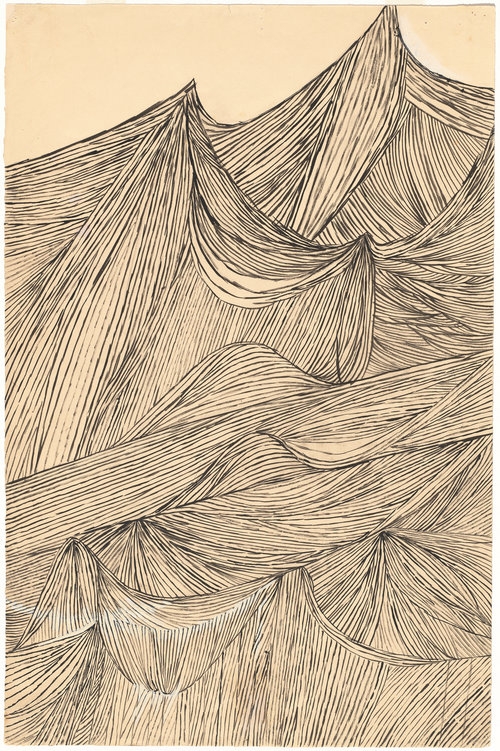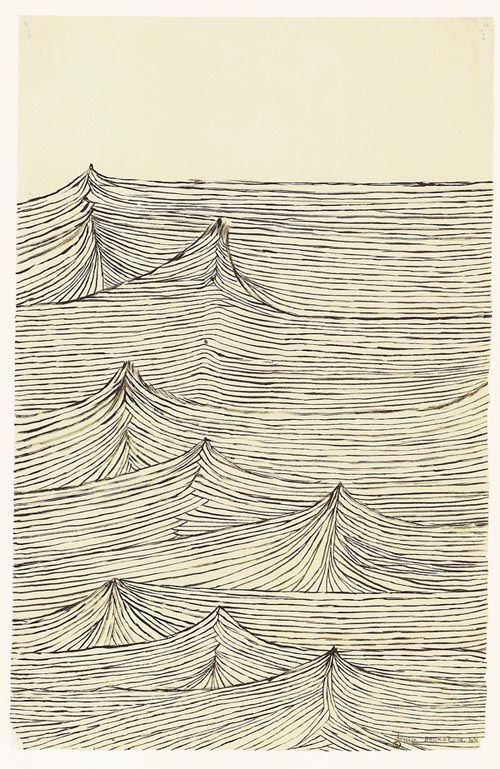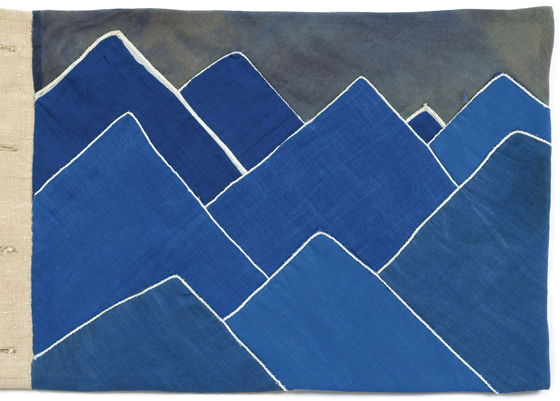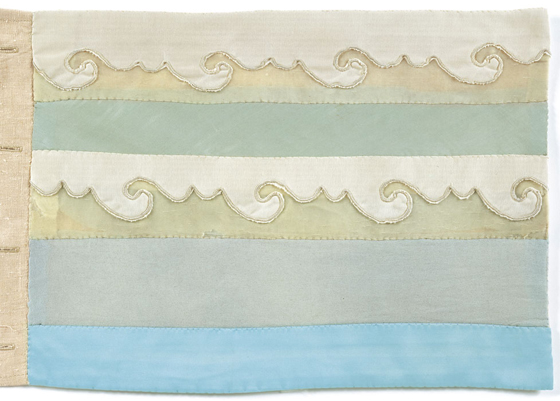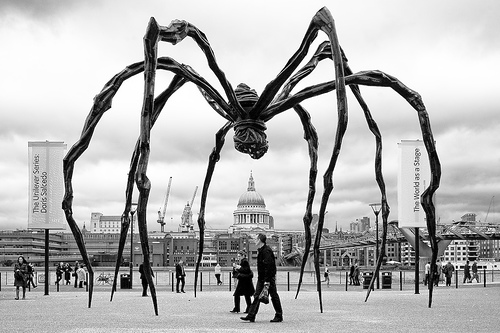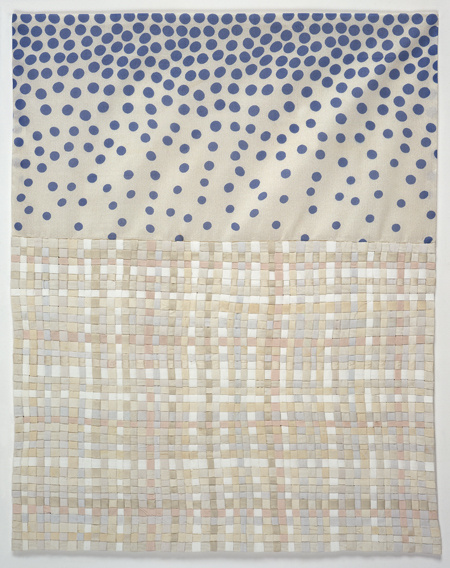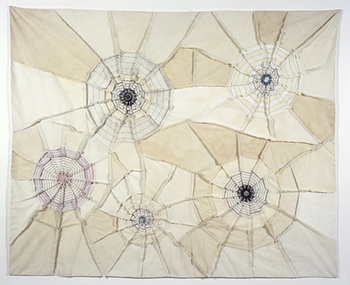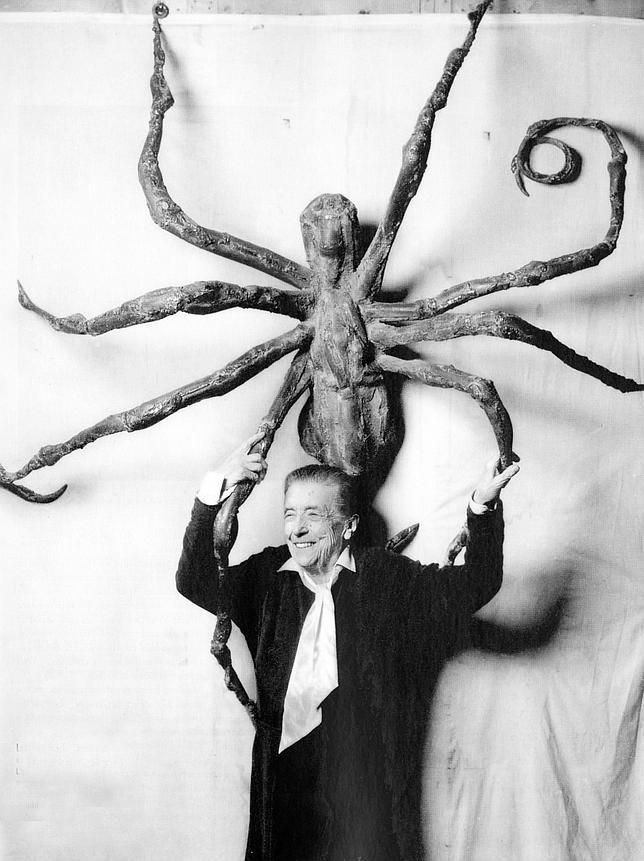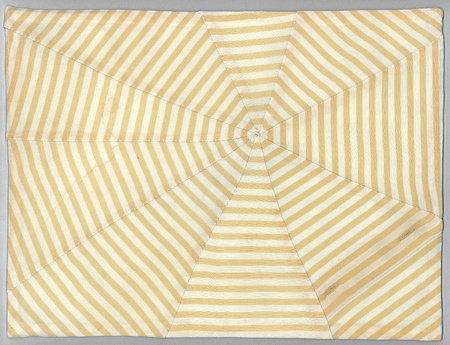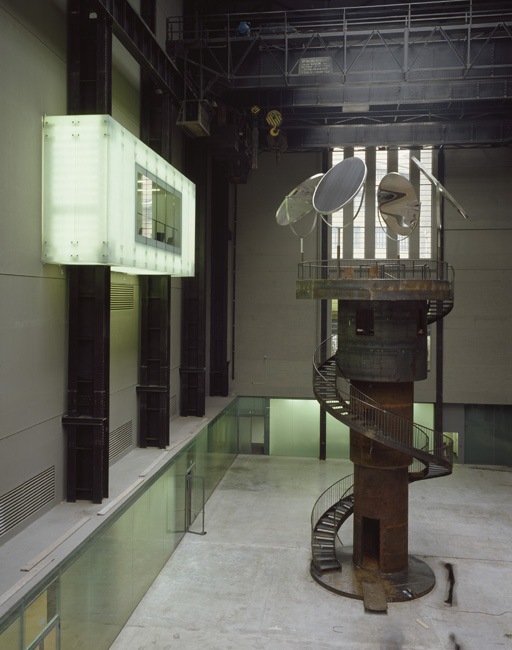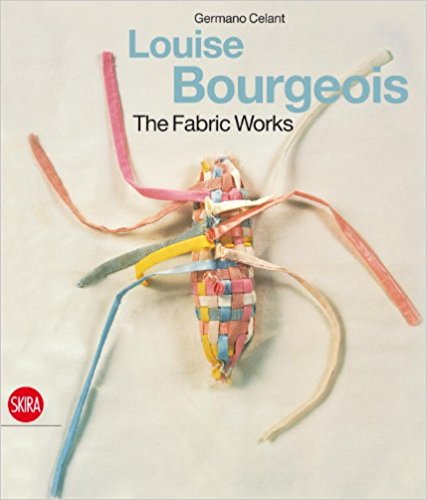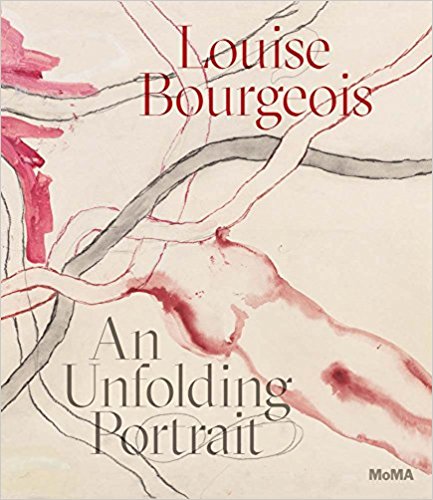Cloth Lullaby
The Verbs and Nouns of Art and Life
In Cloth Lullaby: The Woven Life of Louise Bourgeois, author Amy Novesky and illustrator Isabelle Arsenault create a textual and visual narrative of the life of Louise Bourgeois. True to the book's title, Bourgeois' own words and artwork are woven together to present a story of how life itself is its own creative endeavor.
This article is another woven story of the recurring themes of Bourgeois' works in relation to the narrative presented in Cloth Lullaby. In both subtle and overt ways, Novesky and Arsenault have carefully crafted a translation of Bourgeois' art and what she shared about it. By comparing Bourgeois' own works and words to the picture book's interpretation, we can admire even more the artistry of this children's book.
Appear, Disappear, Reappear: Rivers
"All the houses I lived in were next to a river... the Bièvre—which appears all the time—Creuse and the Hudson. This water, and its danger, appears, disappears, and reappears." —Louise Bourgeois, as quoted in "Ebb and Flow of an Anxious Mind" by Frances Morris
For Bourgeois, the different rivers of her life carried their own temperament, as if the movement of their waters—their floods or gentle flows—were their behaviors. "Each had a different character, but all could be unpredictable and dangerous," Bourgeois described.
The Bièvre was indeed the river that raised young Bourgeois. It ran through her childhood home's backyard and its waters were essential for setting the dyes in the fabrics of the family's tapestry restoration business. For the family, the mood of the river was tied with their own livelihood, for the locks that tamed it could always break: "Each day began with the questions: Is there water in the river? How high is the river?" (As quoted from the curatorial notes here.)
Two other rivers in her life, the Creuse (which served as a refuge in central France for Bourgeois during World War I) and the Hudson (in New York City), ran their moods through her own. The symbolic significance of all three was in their constant movement and their ability to uncover (and recover) memories.
Assemble, Restore, Repair: Tapestries
"But there is something else in the assemblage, there is the restoration and reparation. Mind you that is what my parents did, they restored and repaired tapestries, so there is a common attitude. To repair a thing, to find something broken, to find a tapestry torn apart with big holes in it and destroyed and step by step rebuild it—making an assemblage is that. Your repair the thing until you remake it completely." —Louise Bourgeois, as quoted in The Fabric Works
A significant portion of her work revolves around the theme of reparation. There was, of course, the very literal connection of reparation in her childhood. As a young girl, she would help to restore tapestries for her family's business. As she grew older, creating art was its own way of repairing, or healing, her own emotional upheavals.
Giant sculptures of spiders are present in her work, representing the diligence and patience of those who repair what is broken. In contrast to the metal of her sculptures, she often worked with fabrics, stitching pieces together to make a larger whole. Her fabric works take the form of books, dolls, and even fabric sculptures.
Progress, Rewind, Continue: Spirals
"….to rewind is to make a spiral. And the action demonstrates that even though time is unlimited, there is a limit to how much you can put on it. As you are tightening the spiral you must take care." —excerpted from “Paulo Herkenhoff in conversation with Louise Bourgeois,” in Louise Bourgeois
Spirals seem to embody Bourgeois' own methods for rewinding through her life and bringing memories into her art as a way of moving forward. The renewed meaning of her memories provided Bourgeois with a sense of stability. While spirals can be found in her sculptures as well, they also hold a strong connection in her fabric works.
In conversation with Paulo Herkenoff, she compares the spiral to the act of sewing:
If you tighten too much you risk breaking [the spiral]. It is the same with sewing.
Sewing without a knot at the end of the thread is not sewing. In this sense the spiral is a metaphor of consistency. I am consistent in my spiral. For me there is no break. There is never an interruption in the spiral because I can not stand interruptions.
With each stitch, Bourgeois marked time. By working continuously in her art, she made sure there was evidence of her being.
Choose, Redo, Decide: Creation
"The 'Redo' means that a solution is found to the problem. It may not be the final answer, but there is an attempt to go forward. You get clearer in your thinking. You are active again. You have confidence again." —Louise Bourgeois, Stitches of Time from I Do, I Undo, I Redo (1999-2000) installed at Tate Modern, London, 2000.
Bourgeois returned to similar themes as her own way of creating a meaningful narrative in her life. The ability to return to certain themes gave her a way of approaching the debris left behind from the flooded rivers of her life. At the same time, her art allowed her to be the river itself. She was always churning, always moving, in her art.
Additional Resources
Remarkably, the Museum of Modern Art (MoMA) collection contains 3,095 of Louise Bourgeois' works of art online. An additional website, Louise Bourgeois: The Complete Prints and Books, is maintained by a slew of curators, researchers, and archivists and is supported through MoMA by The Easton Foundation, Bourgeois' personal foundation. At this site, her work can be organized by themes, techniques, and collections. It includes a total of 5,690 works by Bourgeois.
Thanks to Bourgeois' prolific body of work (including reflections of her own work in diaries and interviews), many books about her work exist. Current director of Tate Modern, Frances Morris, was responsible for the 2007 retrospective (7 decades of Bourgeois' work!) at the Tate Modern. Videos and accounts of her interviews with Bourgeois and visits to Bourgeois' home in New York City are available at Tate Modern. Her book Louise Bourgeois: Has the Day Invaded the Night or the Night Invaded the Day features works and writing from the collection known as The Insomnia Drawings.
Additional books by various authors compile Bourgeois' works by theme. All of the epigraphs included in this article are cited from The Fabric Works. Links to the books can be followed by clicking on the images below.
*Illustrations © Isabelle Arsenault courtesy of Abrams Books; photographs by Iliana Gutierrez
**Images of works of art by Louise Bourgeois are © The Easton Foundation courtesy of MoMA
*Frontispiece
Novesky, A., & I. Arsenault. (2016). Cloth Lullaby: The Woven Life of Louise Bourgeois. New York, NY: Abrams Books for Young Readers.




